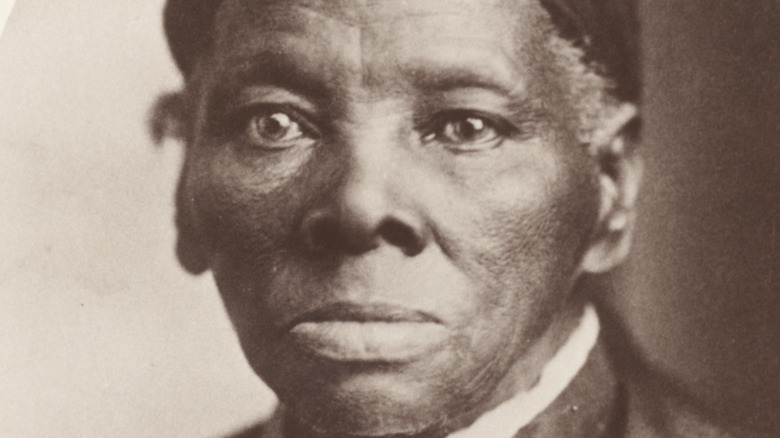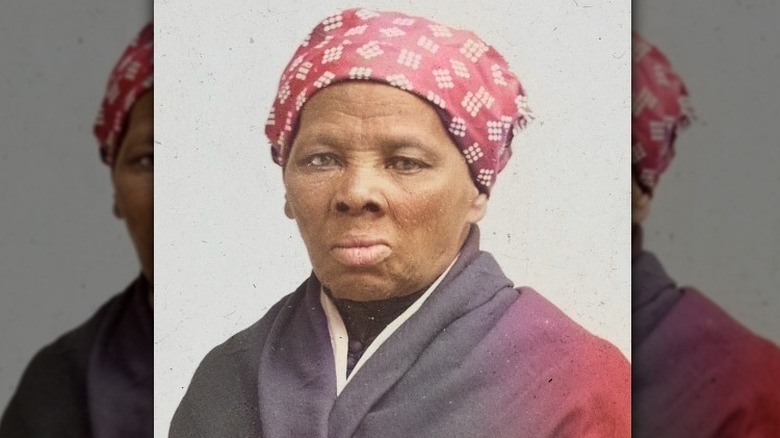This Colorized Photo Will Change How You Look At Harriet Tubman
One of the most notable abolitionists in American history was Harriet Tubman. While she was not the creator of the Underground Railroad — the famous slavery escape route — Tubman would become the its most recognized conductor, as she helped free dozens of enslaved Black people through the organized network.
Tubman was born enslaved sometime in the early 1820s in Dorchester County, Maryland, per PBS. Her birth name was Amarinta Ross, but she later changed it to Harriet to honor her mother. Because of enslavement, she endured an unconscionable amount of violent brutality, as a young child up until she became an adult. The cruelty turned her defiant, though, and she stood up to orders, which ultimately subjected her to more abuse. Some of the violence Tubman faced was so brutal that one instance left her with permanent injury. The end result was Tubman enduring a lifetime of neurological issues, which led to seizures, per Britannica.
She would marry a man named John and take his name, and become Harriet Tubman in 1844. Shortly after, she made her first and successful escape attempt North out of fear of being sold. Winding up in Pennsylvania, Tubman would return south for her sister, and again for her brother, and soon other enslaved people looking for freedom. Her leadership and secret trips from Maryland to Pennsylvania helped free some 50 or 60 people until her final journey in 1860, says the National Park Service.
Harriet Tubman in color
In 2016, Tubman became the focus of the national conversation again when it was announced that she was being considered to be the face of the U.S. $20 bill, replacing Andrew Jackson, per the Treasury Department. Naturally, people were interested in what she looked like. There are several recognized photos of the famous abolitionist in history books and online, but they are black and white. What would she look like in color?
A colorized version of a famous photo of Tubman shows what the heroine would've looked like in color. The picture was taken in 1895, says the National Park Service. In the original image you can see that she is at an advanced age, is mostly draped in a dark-colored thick cloth, and her head is wrapped in a medium colored scarf, with the tops of her ears tucked in it.
In color, the photo demonstrates that her headscarf is red, with a white colored pattern design on it. The cloth covering her body is potentially ombre with dark blue or purple and red hues, and she is wearing another dark colored shirt under it. Tubman's face and complexion is clearer in the colored photo. Her skin shows signs of lines, some wrinkles, and a reddish tinge. Tubman's eye color also appears to possibly be medium brown in color.

